Only the flames are missing
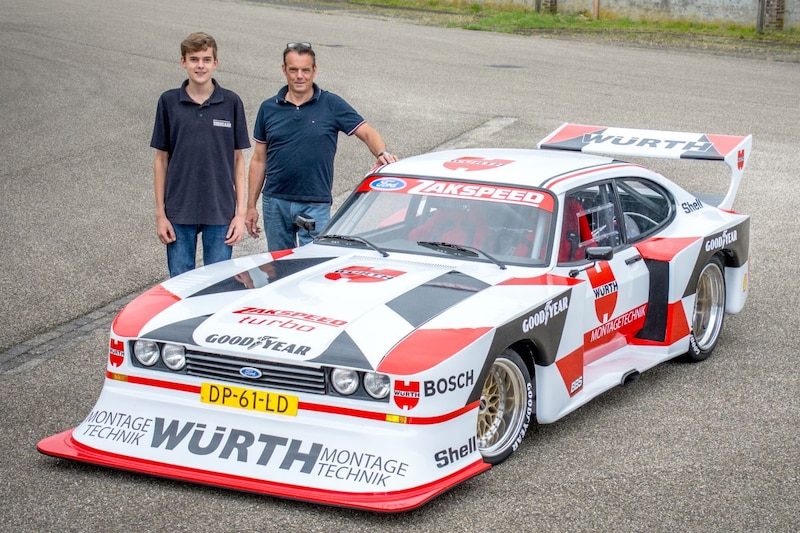
Nothing is more beautiful than the relationship between father and son. A good father knows that you have to build beautiful memories with your son so that you have something nice to talk about later. The bond between father Hans and son Bram Tesselaar is unbreakable. Only that talking is a problem, because in the Zakspeed Ford Capri that they built together, they can hardly understand each other. When they’re on the road, everyone is chomping at their talking points.
The noise is huge. The roar of the engine rumbles through your skull, making the completely stripped-down Capri interior rattle, vibrate and shake, with a screeching gearbox and screeching brakes as background noise. Oncoming motorists flash their lights, truck drivers film, cyclists look back and fall half – or completely -, while pedestrians crash into lampposts as they look back.

This is a totally surreal scenario for everyone except Hans Tesselaar (50). When he is on the road in his Ford Capri, this is daily fare. Logical, because he drives one of the most famous motorsport icons in history. A wider, more false and more intimidating racing car than the Ford Capri with which the German Zakspeed team took on the Deutsche Rennsport Meisterschaft – the forerunner of the DTM – in the early 1980s may never have been built. And although Hans’ Zakspeed-Capri is a replica, there is every reason to believe that it was put together with more love than the original.
Erich Zakowski, that’s what Zak stands for in Zakspeed
That original was born in the German Niederzissen, under the smoke of Koblenz and a stone’s throw from the picturesque Moselle. There lives a man named Erich Zakowski. He started his own garage long ago, in an area where the entire car industry feels the attraction of the Nürburgring. Zakowski also went for the axe and signed up for a race in 1968 with a Ford Escort. Zakowski knew what he was doing behind the wheel, but even more so under the hood. Ford saw that too. The relationship between the garage owner from Niederzissen and the car giant from Cologne became particularly close in the following years, perhaps because they still valued the saying attributed to Henry Ford II in Cologne: ‘Win on Sunday, sell on Monday’ .
Zakspeed Capri had to be the answer to Porsche 935
Zakowski liked to win. And he did it a lot: between 1972 and 1976, Zakspeed was lord and master of the DRM. No one could squeeze more horsepower out of a little Ford Escort than Erich Zakowski. In 1977, however, his party was ruined when Group 5 cars were also admitted to the DRM. According to the regulations of the FIA, those cars could be made as light as a feather; only the roof, bonnet and doors had to remain the same. Technically there were hardly any restrictions, manufacturers could let go completely and produced ultra-low, lightning-fast, fire-breathing monsters with wide fenders and enormous wings that sometimes even frightened the drivers of the time. In 1977 Zakspeed lost out to the Porsche 935. That was bad for his mood and also for Ford’s, because it had to introduce a brand new Capri a year later and it had to shine and not be humiliated by the competition from Stuttgart.
Kevlar for the Capri, Wunderwagen
Ford Motorsport boss Mike Kranefuss came up with a plan and enlisted Zakowski to execute it to perfection. The result was a car dubbed ‘Wunderwagen’ by the German press. The Capri was fitted with as many Kevlar body parts as possible, got a feather-light aluminum tube chassis and so many aerodynamic aids that it looks like a rig with spoilers and splitters has crashed on a Capri that was parked by chance. The miracles did not stop there. The Group 5 rules stated that the engine had to be based on a manufacturer’s production block. Ford chose an old Escort block that was reduced to a displacement of 1,427 cc so that it would be legal to use turbos. Zakowski and his team did this with verve: with the help of two huge KKK turbos, Bosch injectors and Garrett intercoolers, the one-point four reached an incredible power of almost 400 hp. Not enough, because Porsche still wiped the floor with the Zakspeed Capri. That only changed when the cylinder capacity was increased to 1.7 liters, increasing the power to over 600 hp. With Klaus Ludwig at the wheel, the Capri drove just short of laps around the Porsches in 1980. Fortunately for Porsche, Zakspeed had a run-in with the authorities over an oversized rear wing and Zakowski’s team received a few disqualifications. In 1981 the bad luck was over. Ludwig won eleven races and the title. Not that it was necessary to cement the Zakspeed Capri in the memory of racing fans forever. The thing was just too extreme not to be memorable.
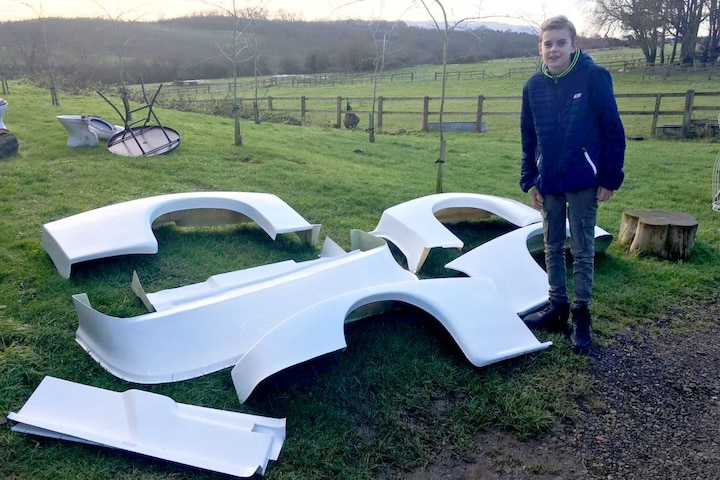
An even smaller Bram with the body kit. Found in England.
Body kit over the internet
But how did you decide to build a replica of such an icon with your fifteen-year-old son? That’s a long story, one that revolves around being inseparable and sharing a love for cars and technology. Hans can’t sit still, restored all kinds of cars, but was looking for something more challenging to do together with Bram. “So we refurbished a Fiat 850 and turned it into a rally version,” says Hans. “We both really liked that. And then Bram found a body kit for a Zakspeed Capri on the internet. It was in England, but we thought that Zakspeed Capri was so beautiful that we went to get it. Moreover, it was a unique opportunity to build a terribly exclusive car, because these body kits are made by the British Capri Club and are almost never offered. So then we had a body kit, but no Capri that could serve as a basis. The second one we looked at, we immediately bought. That was a good base. So good that a Capri enthusiast would denounce us for cutting out the fenders.”

Fitting the body kit on Capri was one thing
They didn’t know at that time that Hans and Bram had started a project with quite a few snags. Fortunately, the Tesselaars are handy guys. Love for technology is in their DNA. Hans has a busy plumbing business and Bram regularly lends a helping hand. They have long since turned their hand to challenges and they have more than enough patience. “But”, says Hans, “when we noticed that the body kit didn’t fit, we still got a bit of a headache. It turned out to be made for a tubular chassis, and did not fit directly on the body. That became a problem. The front spoiler did fit, but it hung thirty centimeters above the ground. That didn’t look like it.”
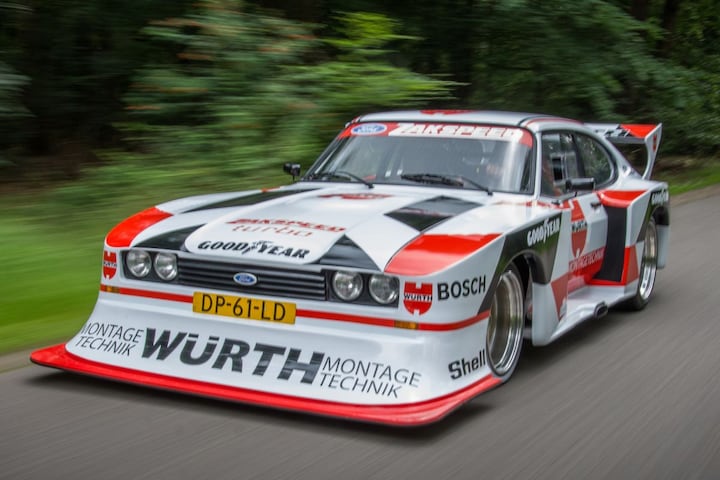
Front spoiler only three centimeters above the ground
Bram and Hans didn’t mind, except for the headache. While improvising, grinding, drilling and sanding, they made the kit fit and with airride they lowered their Capri so much that the impressive front wing hung not thirty, but only three centimeters above the ground. They sawed the huge rear wing out of a wooden plank from the hardware store and folded a diffuser from a thin sheet of aluminum. By now they had real Zakspeed Capri seen driving twice, at Spa and the Nürburgring, with Peter Zakowski – son of Erich – at the wheel. “Great!” says Bram, with unadulterated enthusiasm in his eyes. “The flames spouted out on the gas and after half a lap he was miles ahead of the Porsches and BMWs M1!”
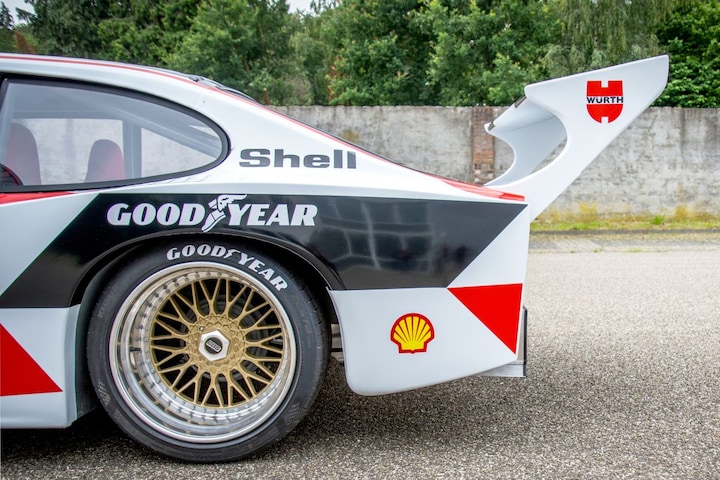
The images remained on Bram’s retina. Initially, he thought the Zakspeed Capri in Hans Heyer’s black and yellow Mampe livery was the most beautiful, but Zakowski’s car in Klaus Ludwig’s Würth livery made such an impression that father and son Tesselaar decided on the spot that their car should be the same.
Basic Capri was a 1.6 with 75 hp
Let’s talk about the flames coming out of the exhaust. In the Capri of Bram and Hans was a 1.6 liter block. With a tight 75 hp, that was certainly not a stripe tractor. “Not impressive, but recreating the turbo block from the real Zakspeed would be just a bit too expensive,” says Hans. He and Bram came up with an alternative and bought a scrap car: a Ford Sierra with a two-litre DOHC block under the hood. “Then there was a wreck in front of the door. That is not really nice towards the neighbors, so that had to be removed quickly. In my haste I then went to work a little too fanatically. I cut the wiring harness without realizing that this engine has an ECU, with an immobilizer. It took me a lot of days to fix that.”
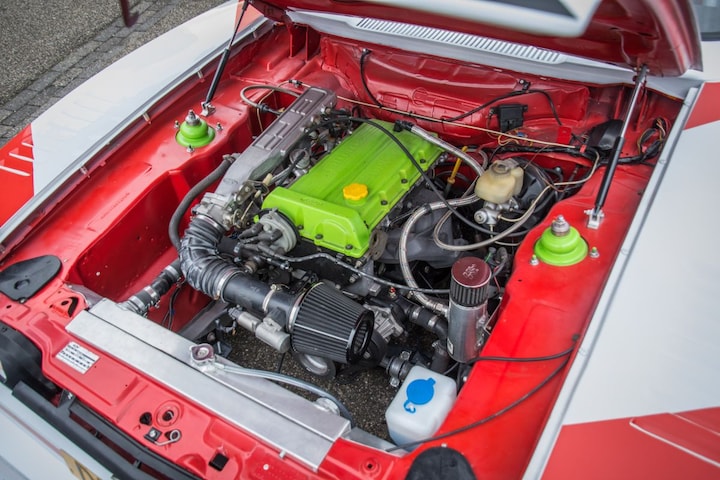
A reluctant start block is not enough to knock Hans and Bram out of the field and failed paint job is not either. “We painted the car ourselves,” says Hans. “I used to spray paint my mopeds myself, so we built a tent in the workshop for the Capri and got to work. It didn’t go very well the first time. The plastic body kit was statically charged and the whole car felt like sandpaper through the dust. So that had to be done again, with a starter cable on the front fender and the bridge. Good soil, that worked fine,” Hans concludes. And still it rained challenges: just find affordable size 305 tires and have the huge honeycomb wheels custom made. Patience, the Tesselaars know, is a virtue.
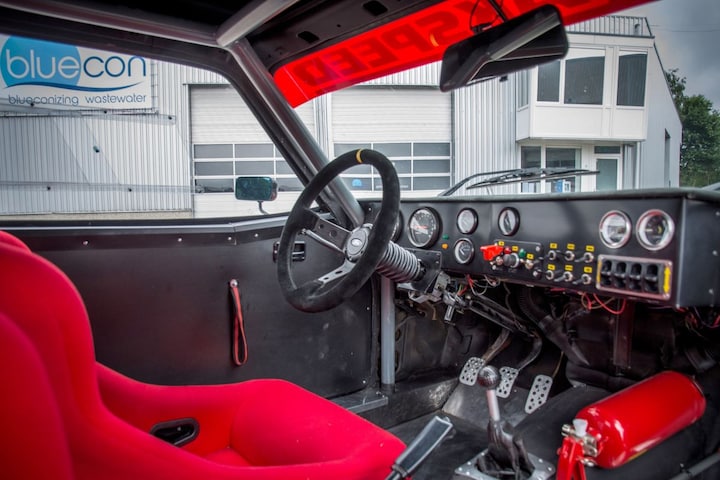
Capri took two and a half years to build
Bram has to laugh when he hears his father talk about the challenges – or problems? – which they had to overcome together. “How long have we been busy?” he says. “About two and a half years. I learned a lot. My father did the difficult things, so I could see how he did it,” says junior. Hans thinks his son is too modest and says: “Bram has so much patience, you can easily put him to sanding with a spinning top for hours. I can look at that with admiration. And he measured all the stickers based on photos he found on the internet. So I couldn’t!”
120 horsepower from Sierra is plenty
Father and son Tesselaar can look back on a wonderful project for the rest of their lives, which they still enjoy after completing the construction. “With the 120 hp of that Sierra block we are making good progress. When we go riding, people’s reactions are always priceless. Everyone sits backwards in the car. We even got passed by a train whose driver was filming us with his phone pressed against the window. That’s great, but if we’re honest, the best thing about this car was building it,” says Hans. The Tesselaars remain sober, even in the presence of one of the most iconic cars of all time, which they built themselves. “Yes,” says Hans, “if a Zakowski like that can make a car like that, then we should be able to do it too, right?”
This story was previously published in AutoWeek Classics 6 2021
.
– Thanks for information from Autoweek.nl